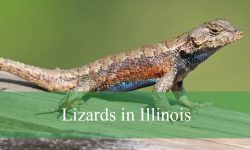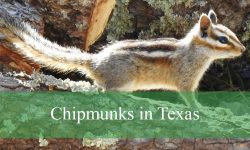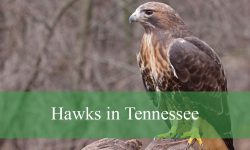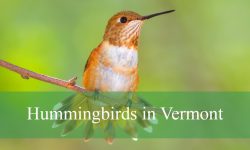Squirrels in North Carolina are a common and lively part of the state’s forests, parks, and even backyards. These energetic mammals can be seen leaping through trees, gathering acorns, or gliding silently through the night sky. With a mix of both daytime and nocturnal species, North Carolina is home to some of the most fascinating squirrels in the eastern United States.
From the familiar Eastern Gray Squirrel to the elusive Carolina Northern Flying Squirrel, each species has its own unique traits and preferred habitat. Some thrive in urban areas, while others stick to the quiet, high-elevation forests of the Appalachian Mountains. Knowing how to identify squirrels in North Carolina can make outdoor adventures even more rewarding.
In this guide, you’ll discover five types of squirrels in North Carolina, complete with pictures and key details for identification. Whether you’re hiking a forest trail or watching your backyard, these squirrels are an important and visible part of the state’s wildlife.
Common Squirrels Found in North Carolina
Eastern Gray Squirrel (Sciurus carolinensis)
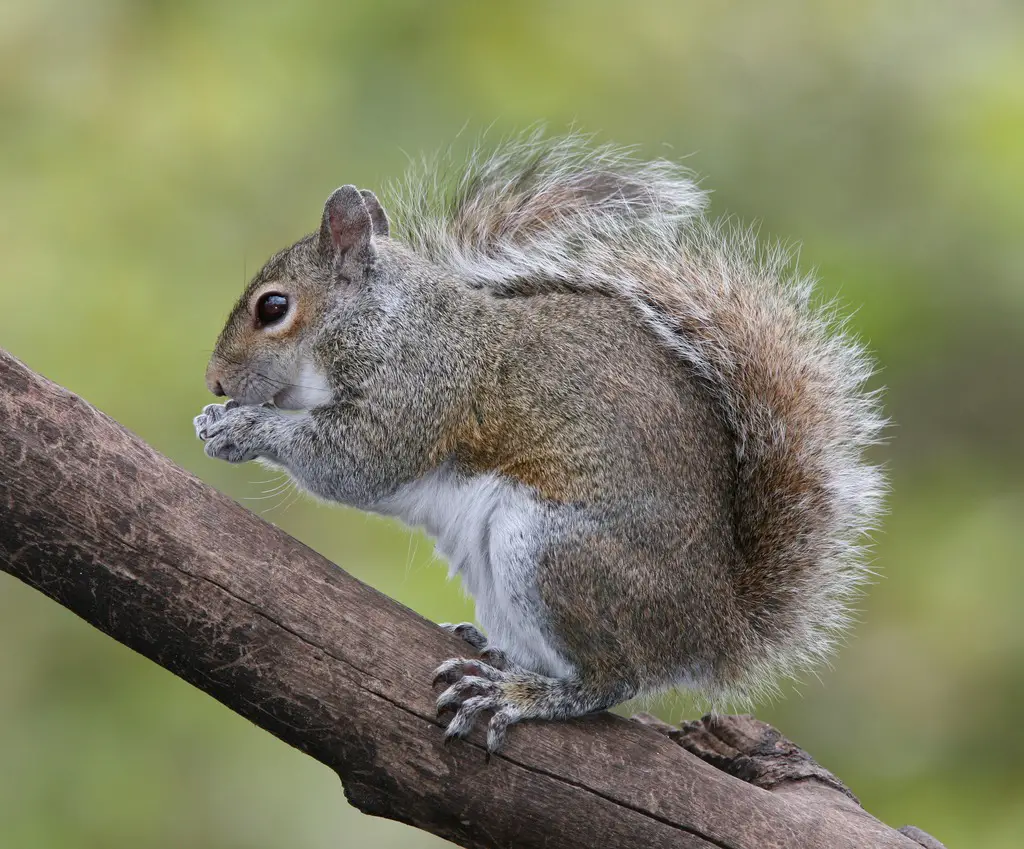
The Eastern Gray Squirrel is the most common and widespread squirrel in North Carolina, easily recognized by its predominantly gray fur, with white underparts and a large, bushy tail. Adults typically measure between 16 and 20 inches in total length, including a tail that accounts for nearly half of that size. Their strong hind legs and sharp claws allow them to leap between branches and climb with ease.
In terms of behavior, Eastern Gray Squirrels are diurnal and highly active during early morning and late afternoon. They are excellent foragers and are often seen gathering acorns, nuts, berries, and seeds. They practice “scatter hoarding,” hiding food in multiple locations for later retrieval. These squirrels are also quite vocal, using a series of barks, chatters, and tail flicks to communicate.
These squirrels are commonly found in hardwood forests, city parks, suburban backyards, and even college campuses. They adapt well to human presence and will often take advantage of bird feeders or trash bins for easy meals. Nesting in tree cavities or building leafy dreys, they can raise multiple litters per year depending on food availability.
In North Carolina, the Eastern Gray Squirrel is present in all 100 counties and is especially abundant in the Piedmont and Coastal Plain regions. Their adaptability to both rural and urban environments has made them one of the most frequently observed wild mammals in the state.
Fox Squirrel (Sciurus niger)
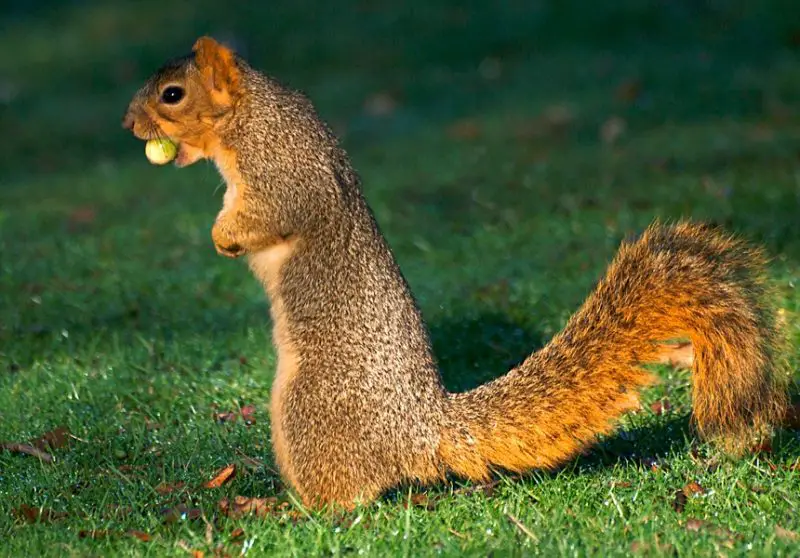
The Fox Squirrel is the largest tree squirrel species in North Carolina, measuring 20 to 30 inches in length, including its impressive, fluffy tail. It varies widely in color, ranging from gray with orange highlights to all-black individuals, particularly in some local populations. The name “Fox Squirrel” comes from its fox-like fur and reddish tint in many individuals.
These squirrels are less agile than Gray Squirrels but are strong and excellent climbers. They are also more solitary, typically foraging alone. Fox Squirrels are active during the day, particularly in the morning. Their diet includes nuts, seeds, fungi, and sometimes insects or bird eggs. They often descend to the ground to forage and will use their strong forelimbs to dig for buried food.
Fox Squirrels prefer open woodlands with widely spaced trees, such as pine-oak forests or longleaf pine savannas. They are often associated with fire-managed habitats that maintain open understories. These squirrels nest in tree cavities or build large leafy nests, usually located high in the canopy.
In North Carolina, Fox Squirrels are primarily found in the Sandhills region and Coastal Plain, especially in habitats dominated by longleaf pine. Populations have also been observed in the Piedmont, although they are less common there. They are generally less abundant than Gray Squirrels due to their more specialized habitat needs.
American Red Squirrel (Tamiasciurus hudsonicus)
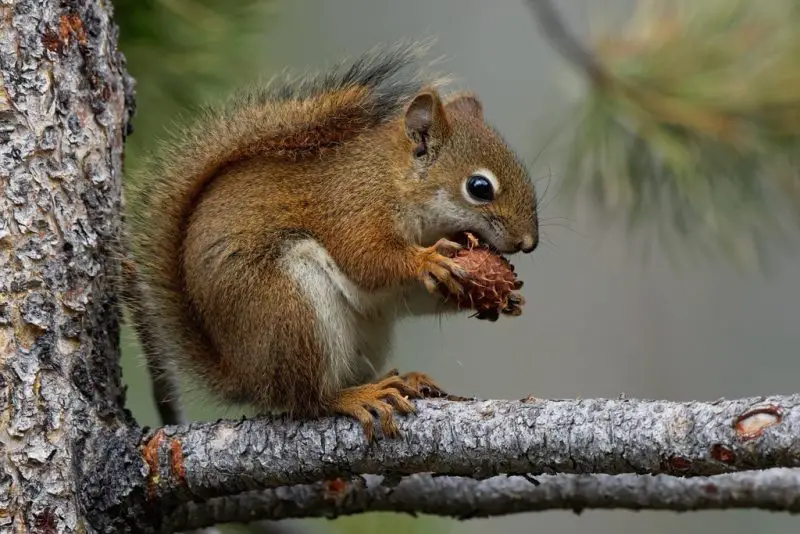
The American Red Squirrel is a small but feisty squirrel found in the higher elevations of western North Carolina. It is much smaller than the Eastern Gray Squirrel, measuring about 11 to 14 inches in length, with a reddish-brown back, white underbelly, and a bushy tail often tinged with red. Their eyes are large and prominent, giving them an alert expression.
Red Squirrels are extremely territorial and vocal, often issuing rapid chattering calls to defend their territory. They are active throughout the day and are known for their energetic, darting movements through the trees. Unlike scatter-hoarding Gray Squirrels, Red Squirrels typically store large amounts of food in central locations, known as “middens.”
These squirrels are strongly associated with coniferous forests, particularly spruce-fir and mixed conifer-hardwood forests. They depend on conifer seeds, nuts, fungi, and occasionally bird eggs. Because they rely on conifer cones as a primary food source, their populations tend to be higher in areas with a consistent supply of cone-bearing trees.
In North Carolina, American Red Squirrels are found almost exclusively in the high elevations of the Appalachian Mountains, such as Mount Mitchell, Grandfather Mountain, and the Great Smoky Mountains. Their restricted range makes them a relatively rare species in the state and a special find for wildlife enthusiasts.
Southern Flying Squirrel (Glaucomys volans)
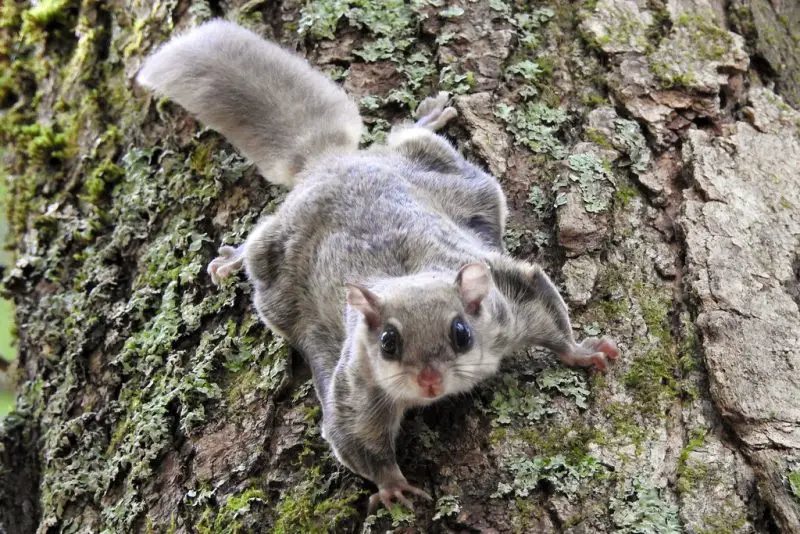
The Southern Flying Squirrel is a small, nocturnal gliding mammal that often goes unnoticed due to its secretive behavior. Measuring only 8 to 10 inches long including the tail, it has soft, grayish-brown fur, large black eyes adapted for night vision, and a flat tail. A key feature is the patagium, a flap of skin stretching from the wrist to the ankle that allows it to glide between trees.
These squirrels are very social, often living in communal groups during colder months. They are most active at night, and their presence is often detected only by the high-pitched chirping sounds they use to communicate. They feed on nuts, berries, insects, fungi, and tree sap, and will often raid bird feeders at night if given the chance.
Southern Flying Squirrels prefer mature deciduous or mixed forests with plenty of tree cavities for nesting. They commonly use abandoned woodpecker holes or natural hollows, and will also use nest boxes in areas with few natural cavities. They can glide over 100 feet in a single jump, making them highly mobile and efficient foragers.
In North Carolina, they are found statewide, from the mountains to the coastal plain. However, because they are active at night and nest in cavities, they are rarely seen. Forested neighborhoods, parks, and wooded backyards often host these hidden gliders.
Carolina Northern Flying Squirrel (Glaucomys sabrinus coloratus)

The Carolina Northern Flying Squirrel is a rare and endangered subspecies of the Northern Flying Squirrel found only in the high-elevation spruce-fir forests of western North Carolina. Slightly larger than the Southern Flying Squirrel, it reaches about 10 to 12 inches in length and has a flatter tail and longer fur. Its fur is soft and brownish-gray, and like its southern cousin, it has large dark eyes for nocturnal activity.
This squirrel is strictly nocturnal and elusive. It glides silently through the treetops in search of fungi, lichens, seeds, and insects. Carolina Northern Flying Squirrels are known to be solitary and are much less social than Southern Flying Squirrels. Their movements and diet play an important role in the health of forest ecosystems, especially in dispersing fungal spores necessary for tree health.
They nest in tree cavities or abandoned bird nests and require cold, moist habitats with high canopy cover. Due to their sensitivity to climate and habitat changes, they are considered an indicator species for the health of high-elevation forest ecosystems.
In North Carolina, they are only found above 4,500 feet in elevation, particularly in the Black Mountains, Great Balsam Mountains, and Smoky Mountains. They are federally protected and rarely observed in the wild, though researchers monitor their populations through special surveys and nest box programs.
Best Time and Places to See Squirrels in North Carolina
Squirrels are active year-round in North Carolina, but the best time to observe them is during the early morning and late afternoon hours in spring and fall. These seasons offer mild temperatures and abundant food sources like acorns, nuts, and seeds, making squirrels more visible as they forage, leap between trees, and prepare their nests.
Eastern Gray Squirrels and Fox Squirrels are commonly spotted in city parks, wooded neighborhoods, and hardwood forests throughout the Piedmont and Coastal Plain. Parks like William B. Umstead State Park near Raleigh, Umstead State Forest, and Pisgah National Forest in the mountains are ideal for observing squirrels in their natural habitat. Southern Flying Squirrels can be found in similar areas but are best detected at night near bird feeders or tree cavities.
To see more elusive species like the American Red Squirrel or Carolina Northern Flying Squirrel, head to the high-elevation spruce-fir forests of western North Carolina. Locations such as Mount Mitchell State Park, Roan Mountain, and the Great Smoky Mountains National Park offer the right elevation and forest types. For the rare Northern Flying Squirrel, sightings are extremely difficult, but researchers often monitor nest boxes in these regions.
Overall, mature forests with a mix of nut-producing trees like oaks, hickories, and pines offer the best chances to observe different squirrel species in North Carolina. Visiting during a calm, quiet part of the day and listening for rustling leaves or soft chirps will increase your chances of spotting these quick and curious animals.


